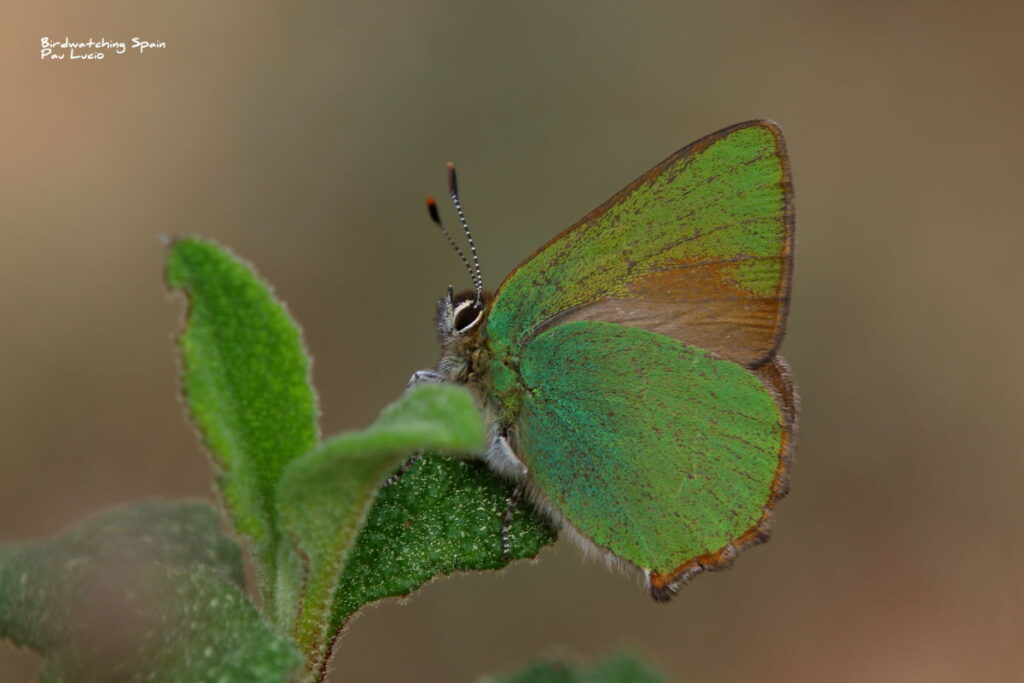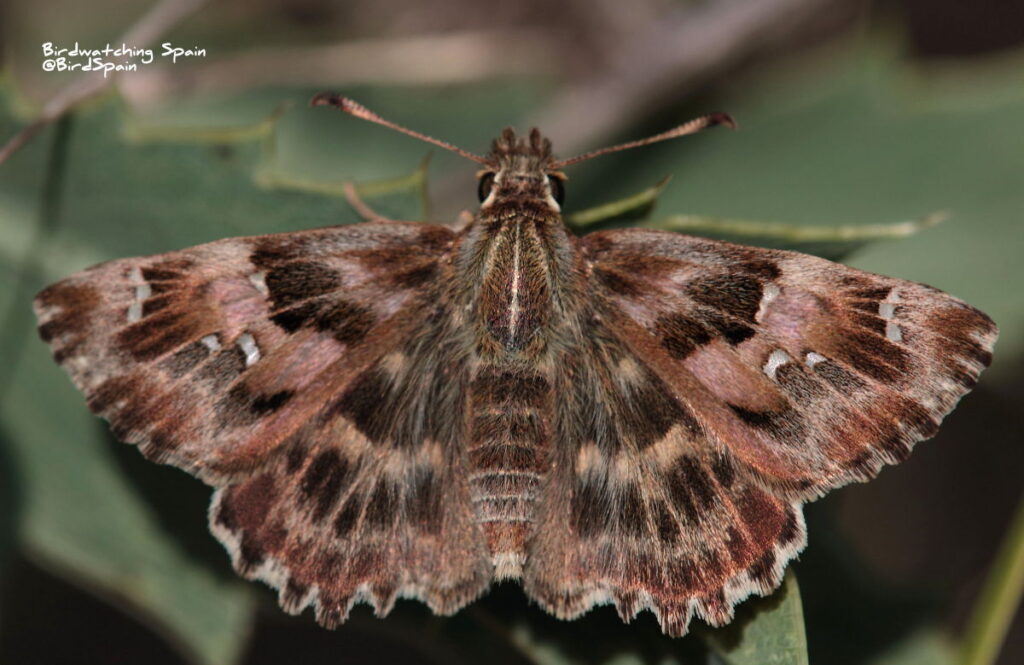Birdwatching and wildlife tours in Spain
Butterflies in Valencia
A great diversity of butterflies in Valencia, Spain
In this article we analitze the diversity and some of the key butterfly species that can be found in the Spanish region of Valencia, a butterfly sanctuary.
Why are there some many butterflies in Valencia?
Valencia region, in East Spain is considered one of the most diverse European areas for butterflies. A staggering 159 species of butterflies have been recorded. That means 72% of all the species found in the Iberian Peninsula.
The key of this diversity is due to its variety of habitats. In the South and West, the climate is much dryer, with a semi-desert habitat. Here we find some beautiful butterflies from the Euchloe genera, i.e. Green-striped white (Euchloe belemia), Portuguese dappled white (Euchloe tagis) and Western dappled white (Euchloe crameri). In addition, close to the cereal crops and fallow fields, we can see the Sooty orange-tip (Zegris eupheme).
The scrubland, a rich habitat for butterflies
During March/April, if we visit the Mediterranean scrubland we might find a nice variety of Lycaenidae. Panoptes blue (Pseudophilotes panoptes) and the stunning Adoni’s blue (Lysandra bellargus) are common species. In addition, we can see the colourful Provence hairstreak (Tomares ballus), Black-eyed blue (Glaucopsyche melanops) and the endemic Mother of pearl blue (Polyommatus nivescens).
Other species we might encounter include Spanish festoon (Zerynthia rumina) which tends to be located in small areas where the food plan (Aristolochia pistolochia) is abundant. What’s more, Provence orange tit (Anthocharis euphenoides) and the beautiful Green hairstreak (Callophrys rubi) are abundant species.
Later in the season, the butterfly diversity changes giving place to Spanish gatekeeper (Pyronia bathseba), Southern marbled skipper (Carcharodus baeticus) and Mallow skipper (Carcharodus alceae). Other butterfly species include Dusky heath (Coenonympha dorus) and Striped grayling (Hipparchia fidia). False ilex hairstreak (Satyrium esculi) and the Blue-spot hairstreak (Satyrium spini) are common species in the scrubland.
In the valleys, are found mainly three different groups of butterflies. The first group is formed by species with a marked Ethiopian origin; Two-tailed Pasha (Charaxes jasius), Mediterranean skipper (Gegenes nostrodamus) and African grass blue (Zizeeria knysna), being the three more abundant towards the end of the summer.
The second group are butterflies with a migratory tendency: Desert orange tip (Colotis evagore) and Plain tiger (Danaus chrysippus) which is very common species in marshes. Finally, the third group is for the invasive species such as the Geranium bronze (Cacyreus marshalli).
Two-tailed Pasha butterfly

Two-tailed Pasha is one of the biggest and most spectacular butterflies found in Europe. It is a bivoltine species, i.e., two annual generations. The first generation occurs in May-June and the second, always more abundant, takes place from the end of July until the end of October. What is more, it is the only butterfly which do not feed on nectar and it is greatly attracted to fermenting fruit. It has a marked territorial and hilltopping behaviour.
It lives in open Mediterranean forests where the caterpillar’s foodplant, the Strawberry tree (Arbutus unedo), is abundant. This butterfly can be seen in a butterfly micro reserve set in the hills of Gandia which we survey regularly. Please, contact us for more information.
Two mountain ranges creating different conditions, the Baetic System

Two mountainous systems cross the Valencian Region, the Baetic and the Iberian. The Baetic System comes all the way from Sierra Nevada, which is the highest mountain in the Iberian Peninsula. It follows a NE direction and once the system arrives to Alicante, it gives place to numerous mountains ranges reaching over 1500 m.s.s.l. For instance, Aitana or Sierra Mariola, the latest being has its higuest 1390 m.a.s.l.
In May, these mountains are covered by a carpet of aromatic flowers mixed with thyme, sage and chamomile. This is heaven for butterflies! There, we can easily find Spanish marbled white (Malanargia ines) and Knapweed Fritillary (Melitaea phoebe). Silver studded blue (Plebejus argus) and Green-underside Blue (Glaucopsyche alexis) reach good density at the end of May.
Another beautiful butterfly we will find easily in Alicante Mountains is the Western marbled white (Melanargia occitanica). However, the star of the show is the lovely Spanish fritillary (Euphydryas desfontainii)!
The Iberian System
On the other hand, the Iberian System follow a SE direction colliding with the Baetic system in the Monduver mountain, near Gandia (Valencia). The Iberian range is different in terms of climate and altitude also allowing a nice variety of butterflies. Here can be found Apollo (Parnassius apollo), Purple-shot copper (Lycaena alciphron) and Spanish argus (Aricia morronensis). Some of the blues include Small blue (Cupido minimus), Escher’s blue (Polyommatus escheri) and Meleager’s blue (Polyommatus daphnis) among many others. Moreover, in the green meadows we will find Chestnut heath (Coenonympha glycerion).
There will also beautiful fritillaries like the, Spotted fritillary (Melitaea didyma), Provençal fritillary (Melitaea deione) and Meadow fritillary (Melitaea parthenoides).
When these mountains range decrease in altitude and become dryer and warmer, we find a good habitat for Great banded greyling (Brintesia circe). In addition, we might find Silver-washed fritillary (Argynnis paphia) and Oberthür’s anomalous blue (Polyommatus fabressei).
In conclusion, Valencia region offers a great number of butterflies being one of the most diverse regions in Spain.
We post regularly photos of this beauties in our Instagram page. Join one of our day butterfly walks and tailor-made tours around Valencia Region and Montes Universales! For schedule trips, please visit our tour calendar or contact us. Next May we have planned a 7-day itinerary focus on butterflies and other wildlife in Valencia.








